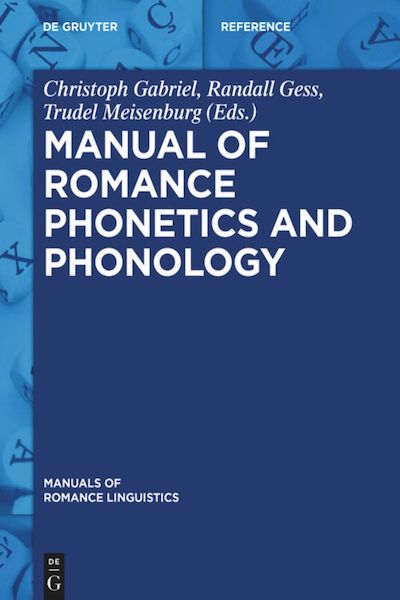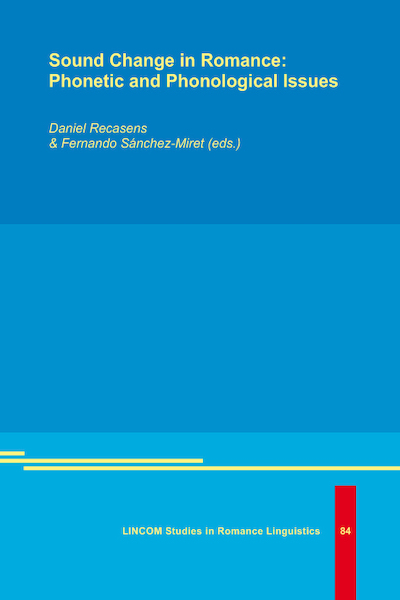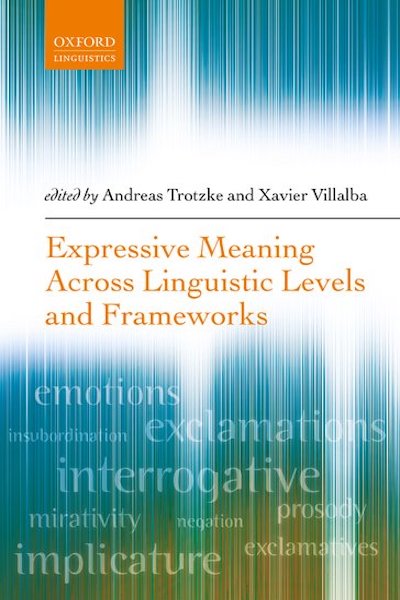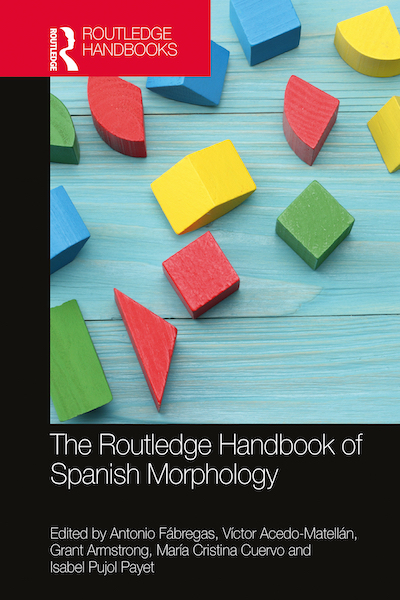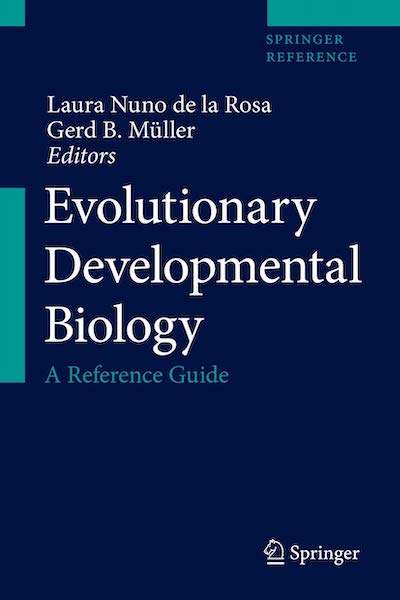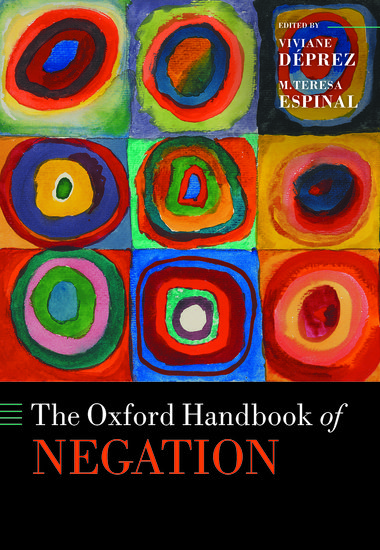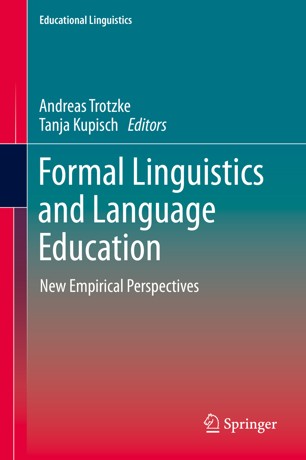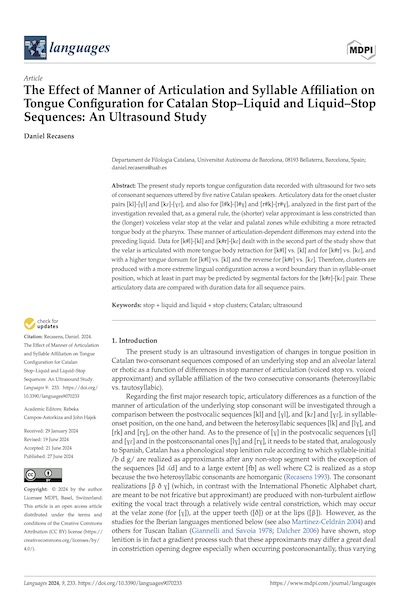
Autors:
Daniel RecasensTítol:
The Effect of Manner of Articulation and Syllable Affiliation on Tongue Configuration for Catalan Stop-Liquid and Liquid-Stop Sequences: An Ultrasound StudyEditorial: Languages, MDPI
Data de publicació: 27 juny 2024
Text complet
The present study reports tongue configuration data recorded with ultrasound for two sets of consonant sequences uttered by five native Catalan speakers. Articulatory data for the onset cluster pairs [kl]-[ɣl] and [kɾ]-[ɣɾ], and also for [l#k]-[l#ɣ] and [r#k]-[r#ɣ], analyzed in the first part of the investigation revealed that, as a general rule, the (shorter) velar approximant is less constricted than the (longer) voiceless velar stop at the velar and palatal zones while exhibiting a more retracted tongue body at the pharynx. These manner of articulation-dependent differences may extend into the preceding liquid. Data for [k#l]-[kl] and [k#r]-[kɾ] dealt with in the second part of the study show that the velar is articulated with more tongue body retraction for [k#l] vs. [kl] and for [k#r] vs. [kɾ], and with a higher tongue dorsum for [k#l] vs. [kl] and the reverse for [k#r] vs. [kɾ]. Therefore, clusters are produced with a more extreme lingual configuration across a word boundary than in syllable-onset position, which at least in part may be predicted by segmental factors for the [k#r]-[kɾ] pair. These articulatory data are compared with duration data for all sequence pairs.


